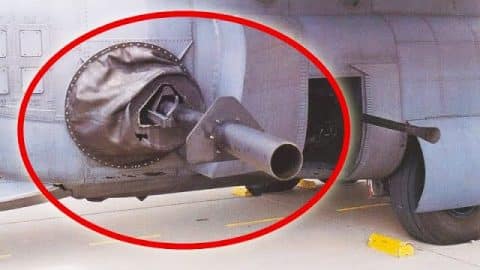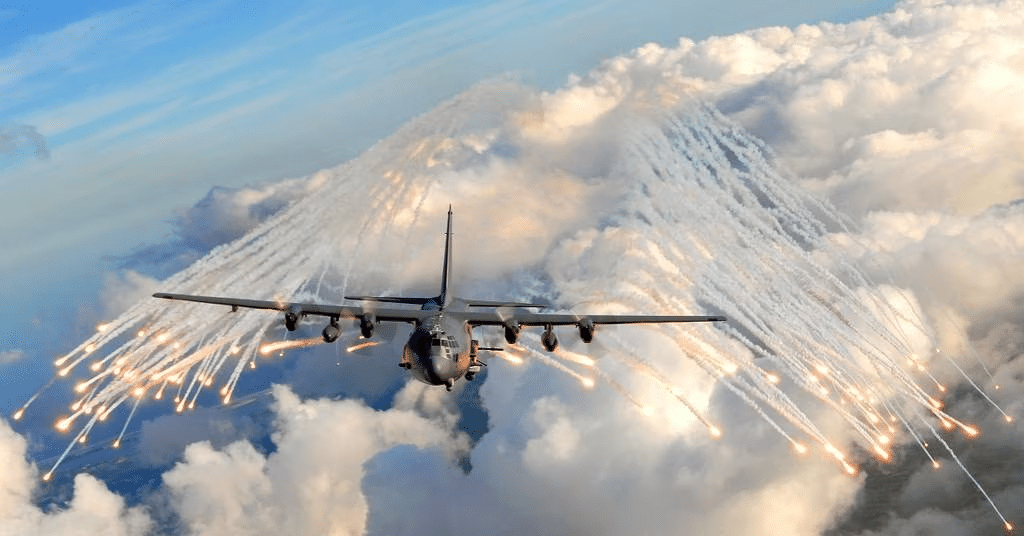
YouTube / Not What You Think
Since the invention of military aviation, militaries have pushed the limits of airborne weaponry.
In WWI, pilots would manually drop bombs from their planes. When the Second World War came, planes were already able to drop bombs in droves. During the Vietnam War, there were specialized aircraft that could carry almost anything – from napalm to miniguns.
But these days, some companies have decided to fit a Howitzer into a warbird. Why?
At first, newly developed helicopters were armed with door gunners. However, their fuel capacity limited the duration the military needed.
By 1965, the Us had already developed its first-ever flying gunship – the AC-47 aka “Puff, the Magic Dragon”.

The design was simple: It only required a regular C-47 and three 7.62 mm miniguns mounted on the left side of the plane. Still, it gained notoriety not because of its miniguns, but because it could loiter over the battlefield for up to 3.5 hours.
Despite the early success of Puff, the C-47 was limited in terms of armament that could be fitted to its airframe.
And so, the US decided to begin developing the C-130 – the most advanced cargo plane America had at the time, into a gunship.
The C-130 could fly further, faster, and longer than the C-47. But most importantly, the C-130 was able to carry five times the weight of weaponry.
Earlier versions of the AC-130A (Spectre) used four miniguns and four rotary cannons. This setup didn’t last that long though, since Lockheed upgraded the aircraft to 20mm and 40mm cannons within a year of its introduction.

The first 105mm Howitzer was delivered to Vietnam in 1972. This was intended to be fitted to the AC-130 airframe.
A side-mounted Howtizer’s recoil was no problem for the lifting power of the cargo plane’s airframe, though did it push the AC-130 6 feet in the opposite direction when fired.
The addition of the M102 Howitzer to the gunship meant even more tactical applications for the aircraft since the Howitzer could fire different shells depending on the mission.
Regardless, deploying the AC-130 isn’t always ideal. The gunship’s large size and slow maneuverability leave it vulnerable to all types of AA guns. For the plane to function as intended, air superiority and ground suppression should be achieved first.
